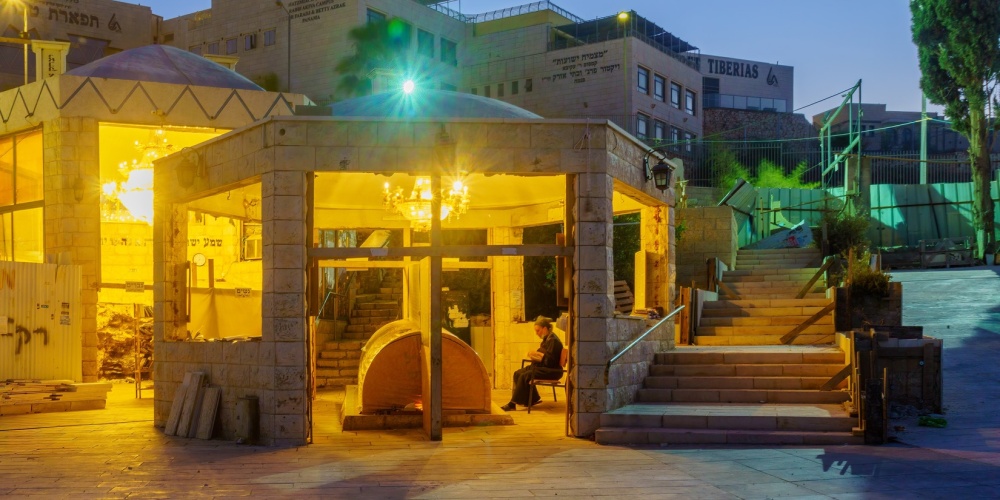
One of the most moving parts of the Yom Kippur davening is the recital of the asara harugei malchut, the ten rabbinic leaders martyred by the Romans. A similar piyut is recited on Tisha B’Av, though the purpose of each—and hence, the piyyutim themselves—differs. On Tisha B’Av, it is included as part of the mourning process on the saddest day of the year. With Yom Kippur being a happy day, its recital is meant to both atone for and inspire us.
Our Sages (Moed Katan 28a) teach that the death of the righteous atones[1], and it is thus hard to think of anything more appropriate to recite on the Day of Atonement. Of course, it is not the death itself that atones for us; rather, it is the impact and inspiration that their lives provide for us that can atone. As Rav Soloveitchik noted, mourning is fundamentally meant as an act of teshuva. Death reminds us of the fragility of life and must inspire us to live a more meaningful life. And when a great Sage dies, “all of Israel mourns”, all must do teshuva.
The most famous of those killed by the Romans was undoubtedly Rabbi Akiva. The story of his death is recorded in masechet Brachot (61b) in connection with the mitzvah of loving G-d—something Rabbi Akiva was able to do despite, or might we say, because he was being martyred.
Yet the story is referenced in one other place in the Talmud, namely in masechet Menachot. Here, the context is not the superhuman faith of Rabbi Akiva, but the seeming unfairness of G-d’s justice in allowing Rabbi Akiva to meet such a tragic and tortuous end.
That the death of Rabbi Akiva is discussed in masechet Menachot highlights the beautifully discursive, yet precisely edited, nature of the Talmud.
As we have previously noted, the first of the four steps of a korban mincha is the kemitza, where the kohen takes a handful of flour—not more and not less—to be burnt on the altar. The Mishnah (Menachot 27a) teaches that regarding the “kometz, a small part invalidates the majority”, meaning that even if even the smallest amount of flour is missing from the handful, the entire korban is invalidated.
Originally meant as an oral text, the Mishnah—attentive to the need for memorization—then lists other mitzvot where a missing part renders the mitzvah “unfulfillable”, beginning with those related to korbanot and then moving to unrelated areas of Jewish law. Examples include the oil and the flour of the korban mincha, the two goats—one for G-d and one for Azazel—of Yom Kippur, the four species of the lulav, the two parshiot of the mezuzah, and the four parshiot of the tefillin. (It then lists those mitzvot where partial fulfilment is better than none, such as the tefillin shel Yad and tefillin shel Rosh, which explains why the laws of tefillin are found in masechet Menachot.)
Regarding both mezuzah and tefillin, the Mishnah (Menachot 28a) teaches that, “even one letter holds back the mitzvah.” One can have the most beautiful of mezuzot, but if just one letter is missing—or even just written improperly—one is left with nothing more than some parchment with some words on it.[2]
Naturally, the Gemara then discusses what exactly renders a letter kosher or not[3]. It is at this point that the Talmud records the amazing story of Moshe’s ascent of Mount Sinai to receive the Torah. We will touch on just part of the story now, and, please G-d, will return to this story in our next post.
For our purposes, the story begins with Moshe asking G-d why He is putting crowns on certain letters of the sefer Torah. G-d responds that, “There is one who, in the future and the end of some generations, will expound from each crown mountains and mountains of laws, and Akiva the son of Joseph is his name”. After being transported to Rabbi Akiva’s Beit Midrash, Moshe is so impressed with Rabbi Akiva that he asks G-d why He does not give the Torah through Rabbi Akiva? A most appropriate question, especially for someone described as “exceedingly humble, more than any person on the face of the earth” (Bamidbar 12:3). Yet G-d, rather shockingly, tells Moshe, “Shut up[4]: This is My decree.” Moshe then asks to see Rabbi Akiva’s reward, and is shown his flesh being weighed at the market-stalls. Upon seeing this, Moshe exclaimed, "Lord of the Universe, this is the Torah and this is the reward!’ Once again, G-d tells him, “Shut up: This is My decree.”
G-d does not answer Moshe’s questions; perhaps because there is no answer, at least from a human perspective. All one can do is to remain silent, as Aharon did in the face of tragedy.
It was on Yom Kippur that the Jewish people were forgiven for the sin of the golden calf, G-d re-established the covenant with His people, and the Torah was given anew. No wonder the Mishnah (Taanit 26b) declares Yom Kippur to be the happiest day of the year.
And yet, on that very same day, in response to Moshe’s request to understand the ways of G-d, G-d declared to Moshe that, “No man can see My face and live” (Shemot 33:20). Instead, G-d revealed His 13 attributes, attributes that we who are created in G-d’s image are to follow. “Just as He is compassionate and merciful, so, too, should you be compassionate and merciful” (Shabbat 133a). We can’t understand G-d, but we can emulate Him. If we do so, we can be assured that the 13 attributes, recited over and over and over again during the Yamim Noraim, will serve as a medium to attaining atonement (see Rosh Hashanah 17b).
On Yom Kippur, we ask G-d to answer our prayers. And G-d asks us to accept, even if we cannot understand, that He does not always do so in the manner that we would like[5].
[1] This idea is the foundational principle of Christianity and thus, many feel it is somehow un-Jewish. Yet as a breakaway from Judaism, it is only to be expected that Christianity borrowed much from it. Of course, as noted above, our understanding of how this atonement works is vastly different than the subsequent Christian use of the idea.
[2] With the increasing role of technology, this rule is more readily understandable. One can make just one little mistake in a computer code of thousands of elements and the program will not work; similarly, a single mutation in one of the billions of cells in the body can be deadly.
[3] And it is here that children are the ones to determine Jewish law. When it is unclear how to read a letter, the example of the Gemara is whether a letter might be a vav or a yud, one should call upon a child, one who is neither too smart (who might figure out the proper letter based on the context) nor too foolish. Whatever the child says will determine if we must read from a new sefer Torah.
[4] All of the translations I have seen render the Hebrew setok as “be silent”. While that is nicer, I do believe that in context, the translation used above (and one consistent with modern-day Hebrew) is more powerful.
[5] This is no contradiction to the notion of the 13 attributes achieving atonement. G-d may grant atonement, but at the same time, not answer our prayers as we would like. In fact, that itself may be part of the atonement ואכמ"ל.



